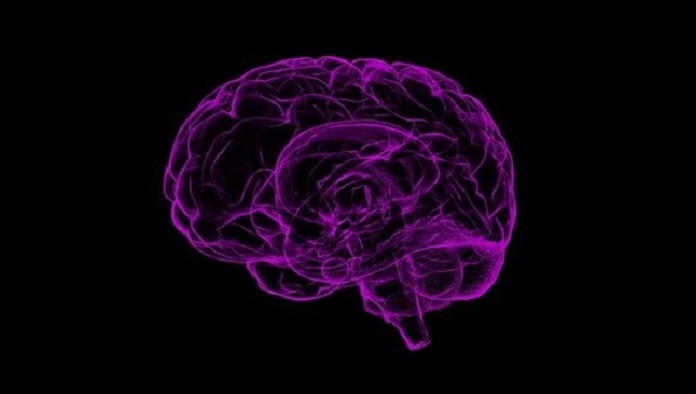Five years ago a 26-year-old was diagnosed with glioblastoma, a form of brain cancer with a relatively low rate of recovery. Today he lives an active, high-quality life with relatively mild tumour progression even though he denied the associated standard treatment of care. Researchers believe that his adherence to a ketogenetic diet may have slowed his glioblastoma progression.
Glioblastoma kills approximately 15,000 people annually.1 With standard care, 5-13% of glioblastoma patients survive more than five years.2 Standard care includes surgical intervention, radiotherapy, and chemotherapy. Some patients also receive a corticosteroid to manage “edema” – excessive swelling – and bevacizumab to control “angiogenesis” – the formation of new blood vessels.
Patient chose ketogenic diet instead of standard therapy
A man with IDH1-mutant glioblastoma refused standard care in 2014 and is still living relatively comfortably in 2021, according to a recent case study.3
The patient opted for ketogenic metabolic therapy (KMT) in place of standard care for glioblastoma. This non-toxic therapeutic approach involves eating a low-carbohydrate, high-fat diet consisting mostly of saturated fats, meats, and some vegetables.3 The patient was self-motivated enough to follow the diet strictly and to monitor his blood glucose levels using the glucose/ketone index. He maintained a glucose/ketone index of around 2.0 throughout his treatment.3
What happened to the tumour?
For three years after his initial diagnosis at University Hospitals Plymouth NHS Trust in the United Kingdom, doctors saw relatively slow tumour growth. In 2017, the patient opted for surgical intervention to remove some of the tumour. After surgery, the patient decided to relax his diet and consume a higher proportion of carbohydrates. i An MRI performed in 2018 showed more advanced tumour progression. The patient returned to a strict ketogenic diet and continues to maintain it today. Doctors have observed minimal vasogenic edema – swelling – and relatively slow tumour growth.3 As of April 2021, the patient is 82 months post-diagnosis and has a good quality of life.3
Ketogenic diet and tumour metabolism
Glioblastoma is largely fueled by glucose, like many other malignant tumours. The breakdown of glucose in a process called “glycolysis” essentially feeds the tumour. By shifting the diet to low-carbohydrate, high fat consumption, glycolysis is reduced and glucose supply to the tumour becomes limited. Reduced glucose levels have also been shown to dysregulate pathways associated with tumour growth factors.
While consuming a low-carb, high-fat diet, the body enters ketogenesis – the production of ketone bodies from fat breakdown. These ketone bodies can be used for energy in place of glucose. Ketone bodies can interfere with the production of energy storage molecules, ATP, which help fuel tumour growth through the glutaminolysis pathway. This pathway consumes the amino acid glutamine to produce ATP.
This patient possessed mutant-IDH1 glioblastoma. Previous studies have shown that patients with this IDH1 mutant have a longer life span than those who do not, at an average of 31 versus 15 months, respectively.3 According to Professor Thomas Seyfried of Boston College, one of the co-authors of the study, “We were surprised to discover that KMT could work synergistically with the IDH1 mutation to simultaneously target the two major metabolic pathways needed to drive the growth of [glioblastoma]”.1
Although the patient from the case study has now surpassed 80 months post-diagnosis, this study cannot conclude that the ketogenic diet is responsible for slowing tumour progression – clinical trials will be necessary to determine whether this is an effective treatment strategy. It may also be possible that the ketogenic diet may be less effective in those without the IDH1 mutation. As stated by the co-authors of the study, “We cannot predict if the therapeutic response to KMT seen in our [glioblastoma] patient will also be seen in other similarly treated [glioblastoma] patients, especially those with tumours that are wild-type at the IDH1 locus”. They note that glioblastoma patients without the IDH1 mutation will likely require glutamine targeting drugs along with a ketogenic diet to slow glioblastoma tumour growth.
Since this is only a report of a single patient, more research needs to be done to determine whether adopting a ketogenic diet could slow all glioblastoma cases or other cancers. However, this study shows promise as the first report on the use of KMT without radiation or chemotherapy on IDH1-mutant glioblastoma.1
References
- Hayward, E. (2021). Case study shows patient on ketogenic diet living fully with IDH1-mutant glioblastoma. EurekAlert! Accessed on June 14, 2021. Retrieved from https://www.eurekalert.org/pub_releases/2021-06/bc-css061021.php.
- Park, C. et al. (2020). Long-term survivors of glioblastoma are a unique group of patients lacking universal characteristic features. Neuro-Oncology Advances; 2(1): January-December 2020, vdz056. Doi: 10.1093/noajnl/vdz056.
- Seyfried, T. et al. (2021). Ketogenic Metabolic Therapy, Without Chemo or Radiation, for the Long-Term Management of IDH1-Mutant Glioblastoma: An 80-Month Follow-Up Case Report. Fronters in Nutrition. Doi: 10.3389/fnut.2021.682243.
- Calvert, A.E. et al. (2017). Cancer-Associated IDH1 Promotes Growth and Resistance to Targeted Therapies in the Absence of Mutation. Cell Reports; 19(9): 1858-1873. Doi: 10.1016/j.celrep.2017.05.014.
- Image by Raman Oza from Pixabay



